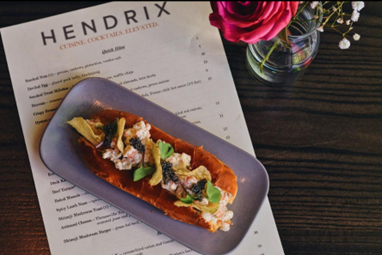The perfect menu will set your restaurant apart, even if there are competitors nearby with a similar style to yours. While menus are certainly one of the most important factors in ensuring that your restaurant is a smash hit among customers, John Sears of SC notes that restaurant owners commonly get a bit lost when it comes to planning and reevaluating their options. To help current and aspiring restauranteurs plan their menus, John has included a few quick tips to contextualize their efforts.
Develop a Solid Concept
When creating a menu, it is crucial to know what you are going for with both the atmosphere and food that you will provide. It helps to consider the demographics of the environment where you are setting up shop. What food options are overrepresented? What are people looking for? And what do you think you can execute well? Jonathan Sears of SC encourages new restaurants to aim for menus that provide something new and exciting for guests without alienating potential clientele. For example, if the area you are setting up shop in has a lot of fried foods, maybe a menu that prioritizes fresh, seasonal ingredients can get a good position in the market. Putting a good amount of work in this stage will save many hours of frustration later. You want to be sure that your concept is set in a way that will attract customers, leave them satisfied, and ultimately make money.
Keep it Simple
A lot of people fall for the trap of an overly complex menu. After all, more options should leave a wider variety of customers satisfied with their meal— right? Jon Sears SC maintains that resisting the temptation to include a huge selection is one of the foundational steps to creating a great menu for your restaurant. There are several reasons smaller menus tend to be best for restaurants. One of the largest is that it can reduce the amount of unsold food that will be thrown out at the end of the night. If there are too many options on your menu, you can be sure that at least a few of them will not be considered favorites. Menus that are too deep can also negatively impact the customer experience. You do not want your guests to feel overwhelmed when pursuing a menu. A few core items that you are sure the staff can execute well will go far.

Don’t Be Afraid of Change
Over the course of a restaurant’s lifetime, they often need to adapt and tweak things to get the perfect menu. Even the best restaurants have room for change. Jonathan Sears notes that one important thing to consider is that items that aren’t selling well can either be changed or removed entirely, whereas restaurants will likely want to keep the items that are moving and keeping customers returning. Remember that you do not need to get carried away with too many changes that could confuse your clientele. Instead, consider trying to find a schedule for change that makes sense. A menu that rotates seasonally based on what is available locally is a common way to suit our natural desire to try new things without requiring changes that are too frequent.
Consider Cost Control and Pricing
Compared to some other businesses, restaurants commonly operate on pretty thin margins. This means that thinking of the cost of your ingredients when planning a menu is essential. You don’t want to end up in a situation where it is difficult to make money even if you have a lot of visitors. Carefully considering the price of your ingredients will help you plan your pricing which will have a lasting impact on your bottom line. Items that you need to sell at very high prices to be profitable may put off customers and end up as food waste come the end of the week (or night!). Balance is key here. Try to keep your margins healthy with simple steps such as using similar sides for your entrees and sticking with items that are in season.
Plan to Reduce Food Waste
Food waste is a reality in most restaurant settings, but it is always wise to plan a menu in a way that reduces this whenever possible. For example, if you find that there are items that you commonly need to toss by the end of the week, it can help to plan your menu with specials that can use up some of these ingredients before they turn. These items are often favorites among customer bases because they are creative and thoughtful by design. One caveat that Jonathan Sears SC offers to restaurant owners and chefs is that planning to reduce food waste only works if you are able to put your specials out before the food has turned. Putting out spoiled food can get customers sick and rightfully tarnish the reputation of your restaurant. If food has gone bad, toss it and use your idea for repurposing next time around.

